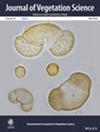Independent Trends of Mountain Vegetation and Soil Properties Over 40 Years of Environmental Change
Abstract
Questions
Although mountain ecosystems are key in providing numerous contributions to people, they are affected by environmental changes. The European Alps, in particular, although shaped by human land use for millennia, suffer pronounced impacts of climate change combined with continued land-use changes and atmospheric nitrogen deposition. As a core component of ecosystem functioning, the soil–vegetation interface is especially sensitive to these environmental changes, and it is therefore crucial to understand its response. Although several studies have demonstrated the impacts of environmental change on vegetation or soil individually, it remains largely unknown whether they respond synchronously.
Location
Montane and subalpine grasslands of the Western Swiss Alps.
Methods
We analysed changes and correlations of ecological indicators of vegetation and soil properties after 40 years in 86 re-surveyed semi-permanent plots.
Results
Ecological indicators of vegetation releves changed, driven by an increase of species adapted to alkaline conditions and mowing or grazing. By contrast, we detected neither a trend of thermophilisation, nor an increase of nutriphilous species or those adapted to hemeroby. Organic carbon, nitrogen, organic matter content, carbon-to-nitrogen ratio and pH increased in the soil. Yet, these changes of vegetation and soil were so far independent of each other.
Conclusions
Our findings suggest that mountain vegetation and soil have so far changed asymmetrically with potential knock-on effects in the decades to come with implications for the conservation of mountain ecosystems and our capacity to predict their future trajectory.


 求助内容:
求助内容: 应助结果提醒方式:
应助结果提醒方式:


